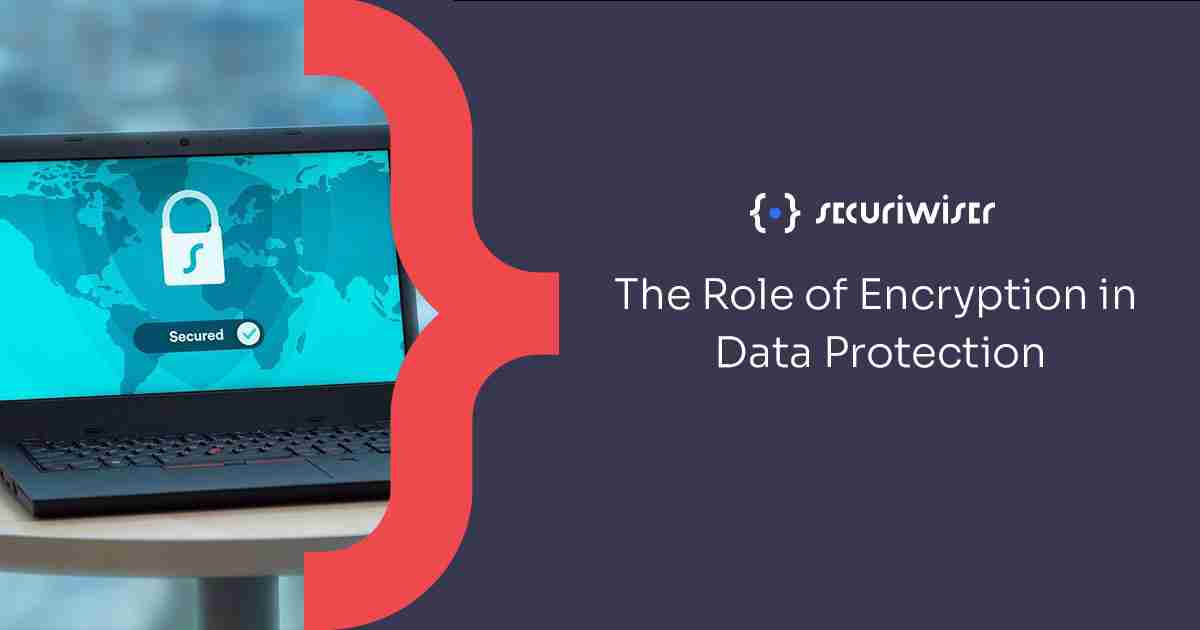The Role of Encryption in Data Protection
Blog / The Role of Encryption in Data Protection
3 MIN READ


What Is Encryption?
Encryption is a method of data protection which involves scrambling transmitted data between two people, two buildings or between other forms of connection, in order to make the data difficult for the intruder to understand. The method is rather simple, the plain text is substituted with other characters such as different letters, numbers, and symbols to create a cipher during transmission. The ciphertext will then be arranged into plain text before reaching the intended destination.
In recent times, cybersecurity breaches have greatly increased in terms of frequency and to improve prevention methods, businesses must be equipped with adequate encryption methods to ensure the protection of their customer’s sensitive data as well as their own.
Symmetric Encryption
Symmetric encryption requires a single key to encrypt and decrypt data. It is a more cost-effective approach to data encryption as it does not take a long time for the computer to generate a strong key which can then be transmitted to the target destination.
The produced encrypted text and key is done so with sufficient complexity and length, therefore symmetric encryption is a safe method for data protection in today’s technological climate. The symmetric encryption method is a good option when just one person wishes to encrypt and decrypt data or when a key is shared amongst multiple groups.
Potential vulnerabilities of symmetric encryption:
- Prior to transmission, the original key may need to be encrypted to ensure that the secret key is secure. A separate key will also need to be created to decrypt the original key also.
- The secret key must be kept secure to prevent the need to create another key and unnecessarily complete further encryptions and decryptions.
- The original key needs to be guarded to prevent any threat actors from hacking the encrypted data and corrupting the file under the pretence of a trusted sender
Asymmetric Encryption
Asymmetric encryption is when two different keys are used, a private key and a public key. The public key can be shared with anyone whilst the private key is used as a password, reserved for those who should have access to certain data.
Data encrypted using a public key can only be decrypted using the matching private key. If a sender wishes to use the asymmetric encryption method, they must first obtain their recipient’s public key. They will then need to encrypt the data using the public key and then send it to the recipient, who will then decrypt the data using their private key.
If they wish to respond, they will need to use the public key of the original sender, who will then decrypt the data using their (original sender) private key. This is a very safe option to ensure protection of sent data as intruders will not be able to decrypt the publicly encrypted data without the private key.
A potential vulnerability of asymmetric encryption:
- Users cannot always be certain that the sender is from a trusted source.
- Reduced risk of receiving corrupted transmitted encrypted files can be to only accept and correspond with organisations and individuals who have security certificates.
The Common Algorithms of Data Encryption
- DES (Data Encryption Standard) – An older symmetric key method which is not used as a security standard anymore due to it being inept to deal with modern technological applications. This algorithm is used in modern times when the computational power is limited.
- Triple DES (also known as TDES and 3DES) – The more modern and secure equivalent of DES. This method encrypts the data, then decrypts it and then encrypts it again before it is received by the receiver. It is slower than DES but more secure. Nevertheless, this method remains less secure than newer algorithm methods.
- RSA – An asymmetric method which uses a public key to encrypt data and then a private one to decrypt it. This option is used when data needs to be sent using an insecure network.
- AES (Advanced Encryption Standard) – A symmetric system which is regarded as one of the most secure algorithms in modern times. It is so secure that it is used by the US government, and it is revaluated every 5 years to detect vulnerabilities and improve security.
Importance of Encryption Protection
Prevention is key. The aim of cybersecurity is to predominantly make threat actors think that your company is too costly and time consuming to attack.
Good encryption practices are necessary to:
- Prevent privacy breaches by ensuring that intruders are unable to read the data
- Prevent security breaches as stored encrypted data will remain secure
- Prevent tampering of the data by malicious users implementing on path attacks
- Authenticate data access for those it is intended for
How Securiwiser Can Help Your Company
Securiwiser can help you to protect your customer, company and employee data by identifying potential vulnerabilities in your systems before hackers exploit them. We can help you avoid potential data breaches and ransomware attacks. Sign up for a free cybersecurity report today.
Previous Article
5 Ways Employees Can Put Your Business at RiskHow secure is
your business?
Blog categories
How secure is
your business?